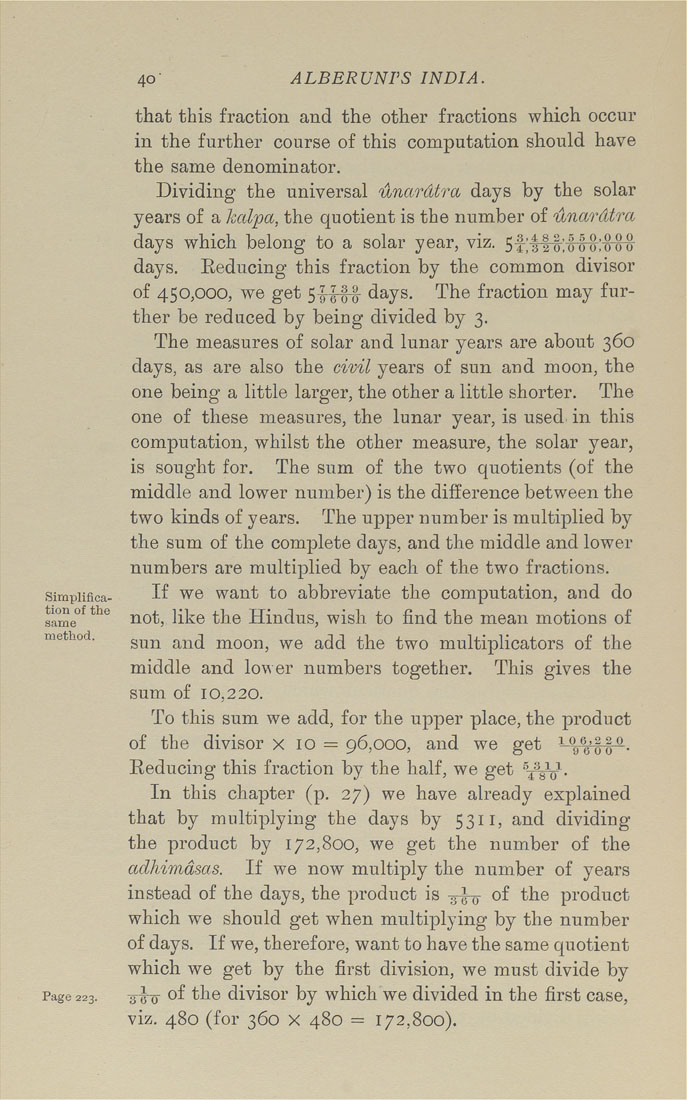ALBERUNTS INDIA.
Simplifica¬
tion of the
same
method.
Page 223.
that this fraction and the other fractions which occur
in the further course of this computation should have
the same denominator.
Dividing the universal iXnardtra days by the solar
years of a kalpa, the quotient is the number of 'dnardtra
days which belong to a solar year, viz. 5f3-|~|;-§w:T¥"ff
days. Eeducing this fraction by the common divisor
of 450,000, we get sa%i) days. The fraction may fur¬
ther be reduced by being divided by 3.
The measures of solar and lunar years are about 360
days, as are also the civil years of sun and moon, the
one being a little larger, the other a little shorter. The
one of these measures, the lunar year, is used in this
computation, whilst the other measure, the solar year,
is sought for. The sum of the two quotients (of the
middle and lower number) is the difference between the
two kinds of years. The upper number is multiplied by
the sum of the complete days, and the middle and lower
numbers are multiplied by each of the two fractions.
If we want to abbreviate the computation, and do
not, like the Hindus, wish to find the mean motions of
sun and moon, we add the two multiplicators of the
middle and lower numbers together. This gives the
sum of 10,220.
To this sum we add, for the upper place, the product
of the divisor x 10 = 96,000, and we get -^Vff--
Eeducing this fraction by the half, we get "-j^^V-
In this chapter (p. 27) we have already explained
that by multiplying the days by 5311, and dividing
the product by 172,800, we get the number of the
adhimdsas. If we now multiply the number of years
instead of the days, the product is -r^^^j of the product
which we should get when multiplying by the number
of days. If we, therefore, want to have the same quotient
which we get by the first division, we must divide by
-y^-g- of the divisor by which we divided in the first case,
viz. 480 (for 360 X 480 = 172,800).
|








